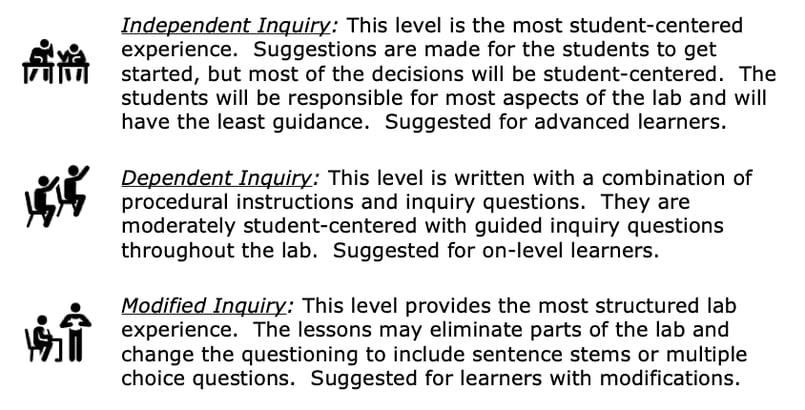Microhabitats Inquiry Lab
Middle School Inquiry Lab on Microhabitats
In this lab students will observe and compare microhabitats. Students will be given 10-15 minutes to explore one to two microhabitats near or at school.
Each inquiry lab will contain an essential question that will drive the lesson and make students think. For this lesson, the essential question is:
- How do microhabitats in different environments support a variety of organisms?
BACKGROUND INFORMATION AND MATERIALS LIST:
Students will begin the lab by reading the essential question and background information. This can be done individually, as lab groups, or as a whole class. If you consider lab groups, you also might include some type of whole class formative checks before digging into the lab.

Materials List:
- magnifying glass
- spoons
- pencils
- lab sheet
- clipboard
PROCEDURE:
This lab is designed to take the students out of the classroom and explore the multiple microhabitats that surround their school grounds. Before you take you class outdoors, students need to start by defining a number of terms to develop their understanding of biomes, ecosystem, biotic, and others.
After students have completed writing down their definitions, you can take your students outside. While outdoors, students will observe two microhabitats. These can be anything from under a rock, cracks in a sidewalk, a puddle of water, or campus garden bed. Students will record the abiotic and biotic factors that they are observing.
If you want to get on your admin’s and custodian’s good side, it might be a good idea to take some trash bags with you and help clean up your campus. A little beautification focuses students' attention on trash around their campus.
CHECK FOR UNDERSTANDING:
At this point in the lab, students will be checked for understanding by answering questions about their findings. Here are a few that come with the lab:
- What kinds of microhabitats are found around school?
- Which microhabitats had the most diversity?
- What makes one microhabitat different from another?
- Why do different animals live in these different environments?
CONCLUSION
Students will go back to the essential question and write a CER (Claim, Evidence, Reasoning) to conclude the lab.
MODIFIED AND INDEPENDENT INQUIRY VERSIONS
All of the Kesler Science inquiry labs come with three different modification levels. Each lab is differentiated using the icons below.
STANDARDS ALIGNMENT
TEKS: 7.10A – Observe and describe how different environments, including microhabitats in schoolyards and biomes, support different varieties of organisms.

Download Over $100 in FREE Resources
For Middle School Science
Simply create a login below and gain immediate access to a selection of our Kesler Science product line worth $100 - for FREE. There's a full version of every product type! You'll also join tens of thousands of middle school science teachers who receive timely tips and strategies straight to their inbox.






